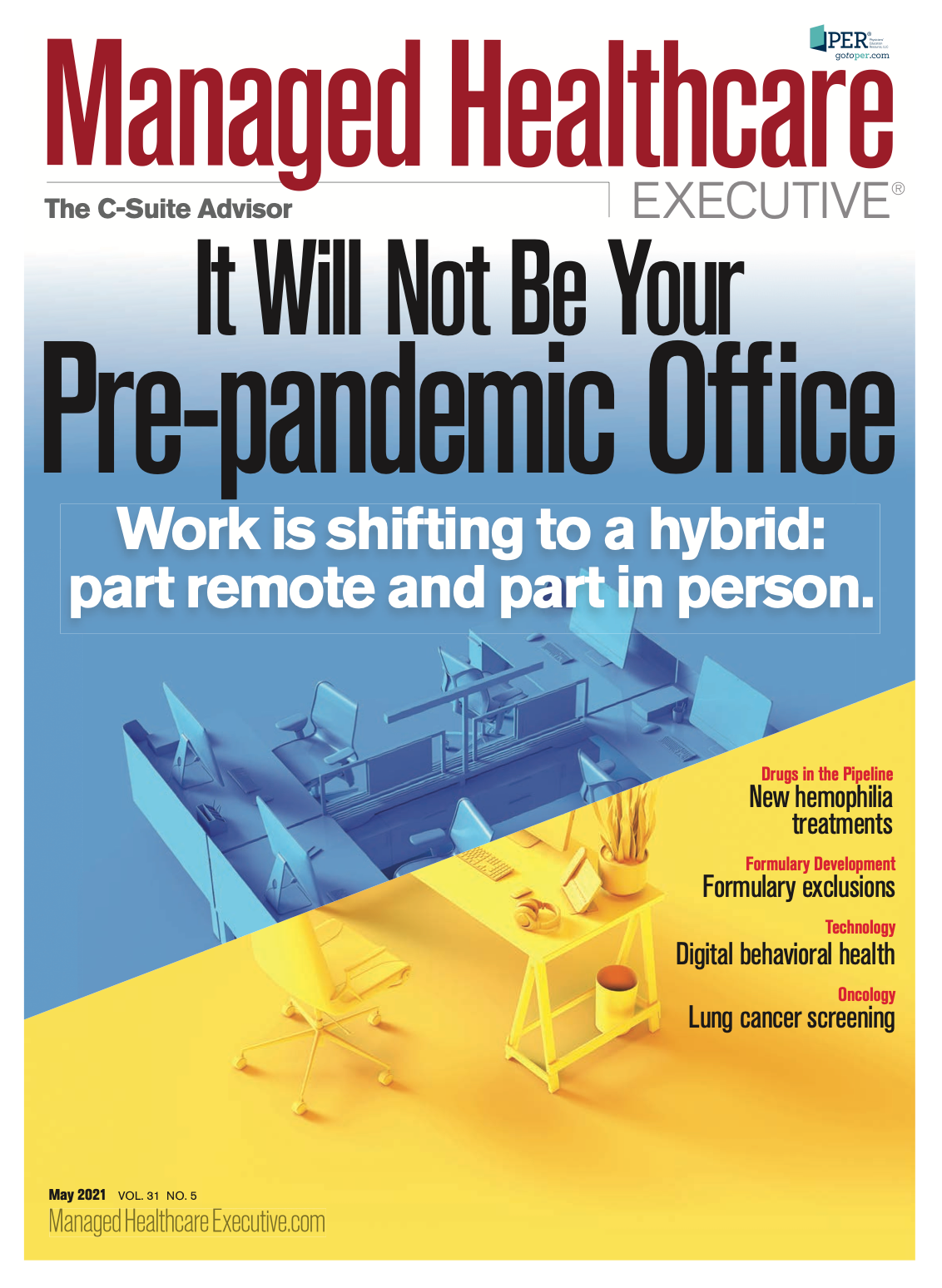Patient-Centered Medical Homes: Were They Built to Last?
The model has put the patient at the center of healthcare.
Over the past 15 years, payers, healthcare purchasers (e.g., Medicare, state governments, employers and individuals), professional associations and state and federal agencies have led many patient-centered medical home (PCMH) or enhanced primary care demonstration projects. In fact, the Primary Care Collaborative (PCC) has compiled a list of more than 500 types of PCMHs or enhanced primary care initiatives that have been conducted nationwide.
The Agency for Healthcare Research and Quality (AHRQ) defines a medical home not simply as a place but as a model of the organization of primary care that delivers the core functions of primary health care: patient-centered, comprehensive, coordinated, accessible, and with a focus on quality and safety.
But not many definitive studies have been published on the results of these demonstration projects, and the articles that have been published have show positive and negative results, says Susan E. Pantely, FSA, MAAA, a principal and consulting actuary at management consulting firm Milliman in San Francisco. So what has become of these demonstration projects? This article will look at how the PCMH model got started, its successes and failures, and what the future holds.
How the model got started
The PCMH model gained momentum in response to several important trends in healthcare during the late ’90s and early 2000s, beginning with the need to transform from a system designed to provide acute care to one designed to provide better chronic and preventive care, says Bob McNellis, M.P.H., a senior adviser for primary care for the Center for Evidence and Practice Improvement at AHRQ in Rockville, Maryland.
When the Institute of Medicine’s (now National Academy of Medicine) published its 2001 groundbreaking report titled “Crossing the Quality Chasm,” it was a wake-up call to address the quality gaps in U.S. healthcare. The report proposed a vision for the future of healthcare with a focus on patient-centered care, says McNellis, whose federal agency funds health systems and quality research.
Following that report, many healthcare organizations, professional societies and health services researchers began looking to improve the quality of care and outcomes of care while decreasing costs, McNellis says.
Current models for the PCMH were developed from a model proposed in 2007 when four physician membership organizations released the Joint Principles of the Patient-Centered Medical Home, which lists the characteristics PCMHs should have, according to McNellis, who says the model of care has evolved considerably
since then.
Pantely says over the years, PCMHs have been modified based on lessons learned in the early stages, such as expanding primary care physician responsibility, adding activities aimed at reducing costs and improving patient outcomes and expanding infrastructure. Some projects ceased to exist because of difficulties in implementation or producing favorable results.
What the model entails
The PCMH model provides comprehensive primary care by redesigning healthcare delivery processes. This is accomplished through an emphasis on team-based care delivery, a whole-person approach to patient care, collaborative relationships between individuals and their physicians, and the use of evidence-based medicine and clinical decision support tools, Pantely says. A PCMH typically consists of a variety of primary care providers: primary care physicians, physician assistants, nurse practitioners, social workers, and sometimes midwives. PCMH practices vary in size but are typically larger than non-PCMH practices because of the volume needed to implement the required infrastructure.
The goal of a PCMH is to put the patient at the center of and in control of their care by facilitating a continuous, healing relationship between the patient and their primary care clinician or team that is focused on the patient’s needs, values and preferences, McNellis says. The primary care team has a central role in ensuring access, coordination and comprehensiveness of patient care.
Pantely says PCPs take on larger roles in patient care in exchange for increased revenue. Additional roles may include making efforts to reduce unnecessary hospital admissions or screening, diagnosing and treating mental health conditions.
Achieving Triple Aim goals
Primary care also has an important role in achieving the Institute for Healthcare Improvement’s Triple Aim, which is designed to improve patient care, improve population health and reduce costs of care, McNellis says. Implementing the functions of a PCMH by addressing timely access to care, coordination and comprehensiveness, patient engagement, and continuous quality improvement can help achieve these goals.
Over the past few years, a fourth aim focused on improving the clinician’s experience of delivering care, sometimes described as putting joy in practice, has been added to the Triple Aim. “Well-functioning PCMHs can help address this fourth aim as well,” McNellis says.
Successes and failures
The number of PCMH demonstration projects conducted across the country and the ubiquitous nature of PCMHs in primary care practices today speak to the model’s success and adaptability, McNellis says.
The National Committee for Quality Assurance (NCQA) operates a thriving PCMH program. It now recognizes roughly 1 in 5 eligible primary care clinicians, totaling just under 70,000 individuals. “Its numbers are increasing, albeit not at the rate they did early in the program’s life cycle,” observes Frank Micciche, vice president of public policy and external relations at NCQA in Washington, D.C. “But this is to be expected with any product, and there are certainly factors beyond just how long the program has been out that affect the numbers.”
“To put the word ‘patient’ in the name was a huge breakthrough,” says Don A. Goldmann, M.D., chief scientific officer emeritus and senior fellow at the Institute for Healthcare Improvement in Boston. “Over the last decade, primary care practices and integrated healthcare practices have moved to greater patient centering or partnerships. It’s important that physicians and patients share decisions and that physicians help patients self-manage their conditions in order to create a healthier population, not one where patients only go to the doctor when they have a problem.”
Amel Hammad, MBA, managing director and leader of the healthcare industry practice at Conway MacKenzie, a nationwide restructuring firm in Chicago, says that in order for a PCMH program to thrive, capital requirements must be met, infrastructure and technology upgrades are needed, and doctors and staff must buy in, and regulatory demands as well as patient compliance have to be met.
Meanwhile, outside organizations have come into the industry and disrupted the model, Hammad says. Here are some examples:
- The pandemic has exacerbated a move to virtual appointments as the first contact point for patient-doctor interactions. Patients and payers are seeing the value in this change.
- Large pharmacy chains have worked their way into the quick service appointment format.
- Payers are contracting with medication adherence companies to help support adherence.
- Emergency service house calls for minor issues are disrupting emergency room visits.
The future of PCMHs
Although the model for PCMHs is no longer new and has become part of the fabric of how primary care is expected to be delivered, there is still much to learn about the individual components, McNellis says: “We need to learn more about how to maintain patient-centeredness and have truly comprehensive and coordinated care. We know what a PCMH should look like; making it work is the real goal now.”
And the term “PCMH” may not be used as frequently because many programs do not meet the formal definition of PCMH or have not gone through a formal PCMH accreditation. “Many primary care programs are driven by large employers, large payers or large provider systems,” Pantely says. “All of these primary care programs begin with the broad concept of emphasizing primary care, but the details vary.”
PCMHs can serve Medicaid, commercial or Medicare populations; each of these populations has different needs. PCMHs have to develop different processes for each population. “PCMHs are a continuous learning cycle that will continue to evolve,” Pantely says.
Pantely sees a variety of primary care models (including but not limited to PCMHs) as a way to bring about affordable healthcare. “More advanced models will lead the way, which will increase reliance on sophisticated analytic tools and electronic health records in order to manage their membership effectively and efficiently.”
Karen Appold is a writer in the Lehigh Valley region of Pennsylvania.

Why Consumers are Switching Providers and Payers – Solutions to Ease Turnover per Loren McCaghy
June 24th 2024Loren McCaghy, director of consulting, health and consumer engagement and product insight at Accenture, shared the results found from his organization's latest report on how many consumers are switching their healthcare providers and insurance payers. In the interview, he touched on some of the main drivers to consumers leaving and solutions on how payer and provider groups can turn things around.
Read More
Chris Evanguelidi of Redpoint Global Talks Effective Patient-Engagement Strategies
May 21st 2021Briana Contreras, associate editor of Managed Healthcare Executive, speaks with Chris Evanguelidi, head of healthcare at Redpoint Global, for this week's episode of "Tuning In to the C-Suite" podcast. In this conversation, the two discussed the best practices for closing the healthcare experience gap and devising an effective patient engagement strategy through a more patient-centric health system.
Listen





















